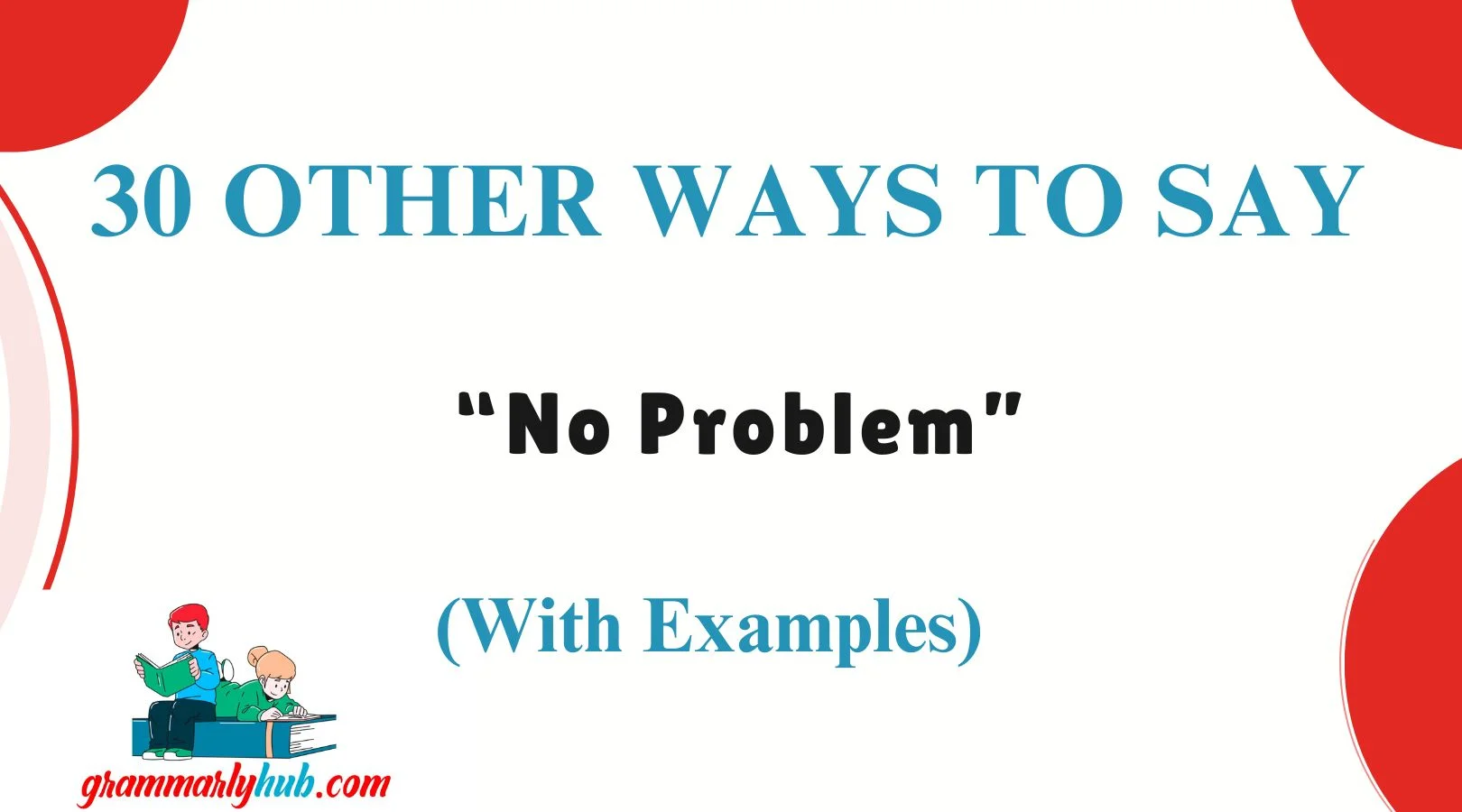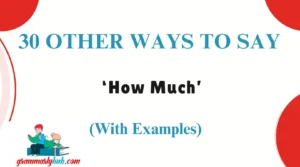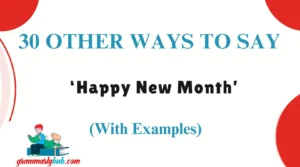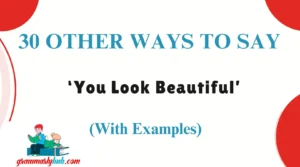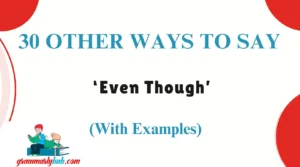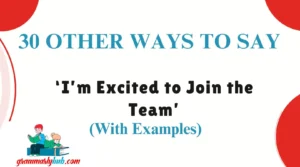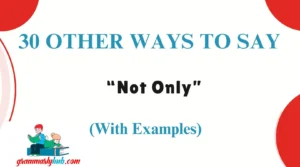Looking for other ways to say “No Problem” in casual or professional conversations? Whether you’re replying to a thank-you or easing a favor, it helps to have different ways to express yourself with confidence and warmth. In this guide, we’ll explore alternative phrases for “No Problem” that fit a range of tones—from friendly and informal to polite and professional.
Sometimes, saying “no problem” can come off too casual or dismissive, depending on the context. That’s why discovering other ways to say “No Problem” will help you sound more thoughtful and appropriate. These phrases can enhance your communication in emails, chats, or face-to-face conversations. Whether you’re aiming for clarity or kindness, we’ve got you covered with a variety of options. Let’s dive into the best synonyms for “No Problem” that convey respect and ease.
What Does “No Problem” Mean?
“No problem” is a casual reply to a thank-you or request, meaning something isn’t an inconvenience or trouble to you personally. People use it to convey that a task was easy or gladly done, often replacing more formal responses like “you’re welcome.” While friendly and laid-back, it can sometimes be misinterpreted as dismissive or insincere, depending on the tone and situation involved. Understanding this helps you choose more thoughtful alternatives when your reply needs to carry more warmth or professionalism than usual.
When to Use “No Problem”
Use “no problem” when responding to a thank-you, a small favor, or casual requests that don’t require emotional or formal acknowledgment. It’s best used among peers, friends, or familiar coworkers, especially when the request was truly easy and required minimal effort. It’s also useful in low-pressure, conversational settings like texting or quick chats, where overly formal responses might feel out of place. Avoid it during formal business communication, where more traditional or polished alternatives like “my pleasure” may better suit the conversation’s tone.
Is It Professional/Polite to Say “No Problem”?
In casual or relaxed environments, “no problem” is acceptable and polite, showing you’re helpful without needing thanks or appreciation. In business or service industries, though, it may sound like the person was a burden—even if that wasn’t your intention. Many customer service experts now recommend using phrases that sound gracious and validating, like “happy to help” or “of course.” So yes, it’s polite, but it may not always feel appropriate or professional, depending on the tone and relationship dynamics involved.
Pros and Cons of “No Problem”
Pros:
- Feels relaxed, modern, and conversational, helping the speaker sound approachable and easygoing in most informal contexts.
- Signals that the request or favor wasn’t inconvenient, which can help put the other person at ease emotionally.
- Often perceived as a “cool” or youthful response, especially in Gen Z or Millennial communication.
Cons:
- May come across as passive or dismissive in formal or hierarchical environments, such as customer service or executive emails.
- Doesn’t directly acknowledge appreciation or gratitude, which can sometimes seem cold or distant in emotionally significant exchanges.
- Can unintentionally imply the favor might have been a problem under different circumstances, even if that’s not what you meant.
Synonyms For “No Problem”
- You’re welcome
- Anytime
- My pleasure
- Of course
- Sure thing
- No worries
- Don’t mention it
- It was nothing
- Not at all
- Always happy to help
- No trouble at all
- It’s the least I could do
- Certainly
- By all means
- I’ve got you
- It’s what I’m here for
- That’s all right
- Not a big deal
- No biggie
- All good
- It’s okay
- Absolutely
- Glad to help
- No need to thank me
- That’s what friends are for
- You got it
- It’s no bother
- I’m here for you
- Don’t worry about it
- That’s fine
1. You’re Welcome
Definition: A traditional reply used to acknowledge gratitude politely and clearly.
Explanation: It’s timeless, safe, and works in almost any setting, making the speaker sound respectful and engaged in the interaction.
Example:
Thanks for your help today! → You’re welcome.
Worst Use: May feel too formal for casual text chats between friends or coworkers.
Tone: Polite, professional, universal.
2. My Pleasure
Definition: A gracious way to say the favor or task was enjoyable for you.
Explanation: This phrase signals warmth and enthusiasm, especially in professional or customer service environments.
Example:
Thanks for arranging the meeting! → My pleasure.
Worst Use: Might feel overly enthusiastic or unnatural in very casual conversations.
Tone: Warm, professional, refined.
3. Anytime
Definition: Implies you’re happy to help now and in the future.
Explanation: It’s a friendly, easygoing way to show continued support and willingness without sounding scripted.
Example:
Thanks for your help last night! → Anytime!
Worst Use: Avoid when the favor was complex or emotionally significant—it can sound a bit too casual.
Tone: Friendly, casual, encouraging.
4. Of Course
Definition: A phrase that suggests the action was obvious and natural to do.
Explanation: It implies you didn’t hesitate to help and supports a tone of positivity and openness.
Example:
Thanks for picking that up for me. → Of course!
Worst Use: May feel flippant if said with a sarcastic or rushed tone.
Tone: Supportive, sincere, affirmative.
5. Sure Thing
Definition: A laid-back, cheerful way to affirm willingness.
Explanation: It sounds upbeat and casual, ideal for light-hearted requests or affirmations.
Example:
Thanks for covering for me! → Sure thing!
Worst Use: Avoid in formal or serious conversations—it lacks professionalism.
Tone: Casual, friendly, positive.
6. No Worries
Definition: A relaxed, easygoing phrase that reassures the person that their request caused no stress or inconvenience at all.
Explanation: It’s commonly used in casual conversations and is especially popular in Australian and British English-speaking environments.
Example:
Thanks for the update! → No worries!
Worst Use: Can sound too casual or dismissive in business emails or high-stakes professional settings.
Tone: Chill, reassuring, casual.
7. Don’t Mention It
Definition: Suggests the favor was so minor, it’s not even worth bringing up or acknowledging in conversation.
Explanation: It’s a classic way to downplay any obligation while still being polite and considerate in your reply.
Example:
Thanks for holding the door! → Don’t mention it.
Worst Use: Might sound dismissive when someone expresses heartfelt or emotional gratitude.
Tone: Traditional, low-key, gracious.
8. It Was Nothing
Definition: A modest response that communicates the favor or help didn’t take much time or effort on your part.
Explanation: It’s often used to downplay effort, making the other person feel comfortable and unburdened by your help.
Example:
Thanks for your time! → It was nothing.
Worst Use: May minimize meaningful help or make the speaker seem disinterested if said with the wrong tone.
Tone: Modest, casual, neutral.
9. Not at All
Definition: A gentle, old-fashioned way to dismiss the idea that the favor was inconvenient in any way.
Explanation: It conveys genuine humility, often heard in polite or slightly more formal exchanges.
Example:
Thank you for your patience. → Not at all.
Worst Use: Feels outdated in very modern, casual settings or tech-driven environments.
Tone: Gracious, respectful, formal.
10. Always Happy to Help
Definition: Clearly conveys that you enjoyed assisting and are willing to do it again if needed.
Explanation: Adds emotional warmth and shows enthusiasm for being of service or support in the moment.
Example:
Thanks for walking me through that! → Always happy to help.
Worst Use: May feel forced if said robotically or too frequently without sincerity.
Tone: Warm, enthusiastic, service-oriented.
11. No Trouble at All
Definition: Suggests that what you did wasn’t an inconvenience and was gladly done without pressure or frustration.
Explanation: It’s a gentle and reassuring way to express support or help.
Example:
Thanks for staying late today. → No trouble at all.
Worst Use: Avoid using in text messages where tone might be hard to read and misunderstood.
Tone: Kind, mild, reassuring.
12. It’s the Least I Could Do
Definition: Shows humility by suggesting you only did the minimum and are happy to have helped in a small way.
Explanation: This works well when someone offers deep gratitude, and you want to soften the weight of the exchange.
Example:
Thanks for everything you’ve done. → It’s the least I could do.
Worst Use: May seem disingenuous if you actually went above and beyond but try to underplay it.
Tone: Humble, compassionate, modest.
13. Certainly
Definition: A polite, formal way to agree or affirm that something was no problem and willingly done.
Explanation: Often used in professional or high-service environments, such as customer support or executive settings.
Example:
Thanks for handling this so quickly. → Certainly.
Worst Use: May feel robotic or stiff in friendly or informal conversations.
Tone: Formal, professional, polished.
14. By All Means
Definition: A more expressive way to give permission or agree, showing that something was welcome or encouraged.
Explanation: It conveys encouragement or approval, especially in response to someone thanking you for granting a favor or request.
Example:
Thanks for letting me borrow your charger. → By all means.
Worst Use: Not appropriate when someone shares sincere emotional appreciation—can feel transactional.
Tone: Supportive, gracious, polite.
15. I’ve Got You
Definition: A modern and informal phrase meaning “I’m here for you” or “Consider it done.”
Explanation: Popular in Gen Z and Millennial speech, especially in supportive friendships or casual teamwork settings.
Example:
Thanks for helping me out. → I’ve got you.
Worst Use: Too casual for formal conversations, emails, or meetings.
Tone: Supportive, friendly, modern.
16. It’s What I’m Here For
Definition: Reinforces the idea that you’re available to help and it’s part of your role or relationship.
Explanation: Used when your responsibilities include helping others, such as in customer service or mentorship roles.
Example:
Thanks for guiding me through this. → It’s what I’m here for.
Worst Use: Sounds insincere if you actually did something outside your job description and want more appreciation.
Tone: Service-minded, supportive, generous.
17. That’s All Right
Definition: A gentle way to say things are okay and there’s no need for thanks or concern.
Explanation: Often used in forgiving or easygoing contexts where you want to de-escalate or soften the tone.
Example:
Thanks for understanding the delay. → That’s all right.
Worst Use: Avoid it when you want to express enthusiasm or joy—it feels too neutral.
Tone: Mild, soothing, low-pressure.
18. Not a Big Deal
Definition: A way to downplay your effort or the favor so the other person feels less indebted.
Explanation: Good for casual interactions when you want to keep things light and easygoing.
Example:
Thanks again for the ride! → Not a big deal.
Worst Use: Can sound dismissive when someone expresses deep thanks or vulnerable emotion.
Tone: Casual, laid-back, unserious.
19. No Biggie
Definition: A slang version of “not a big deal,” often used in light, humorous, or familiar situations.
Explanation: Best used with people you’re comfortable with, where tone and humor are understood and appreciated.
Example:
Thanks for covering my shift. → No biggie.
Worst Use: Avoid formal writing or first-time professional interactions.
Tone: Playful, light, friendly.
20. All Good
Definition: Means everything is fine and there’s no need for concern, apology, or further discussion.
Explanation: Commonly used in texting or casual chats to diffuse tension or express understanding.
Example:
Thanks for your patience during the delay. → All good.
Worst Use: Can seem too casual when someone is apologizing sincerely or professionally.
Tone: Relaxed, informal, comforting.
21. It’s Okay
Definition: A soft, kind way of saying the favor or issue isn’t a problem and there’s no hard feeling.
Explanation: Used to offer emotional reassurance or express forgiveness during both helpful and apologetic conversations.
Example:
Sorry for the trouble. → It’s okay.
Worst Use: May sound vague or passive if more clarity or enthusiasm is needed in professional settings.
Tone: Gentle, comforting, neutral.
22. Absolutely
Definition: A confident and enthusiastic word that confirms your willingness to help or agreement with full support.
Explanation: Works well in professional and casual conversations where firm agreement or reassurance is appreciated.
Example:
Thanks for being flexible today. → Absolutely!
Worst Use: Avoid when an apology is made; it might not suit emotionally sensitive moments.
Tone: Confident, positive, reliable.
23. Glad to Help
Definition: Communicates that you’re genuinely happy to assist and your support was freely and willingly given.
Explanation: Combines both gratitude and warmth—perfect for formal or friendly replies.
Example:
Thanks for your assistance! → Glad to help.
Worst Use: Sounds awkward if help was forced or done reluctantly.
Tone: Sincere, grateful, approachable.
24. No Need to Thank Me
Definition: Indicates the action was no inconvenience and the person needn’t feel obliged to show appreciation.
Explanation: Often used when you want to gently brush off thanks with warmth and humility.
Example:
Thank you so much. → No need to thank me.
Worst Use: Don’t use when formal gratitude is expected; may sound dismissive.
Tone: Humble, casual, kind.
25. That’s What Friends Are For
Definition: Highlights that your action was rooted in friendship and emotional connection, not obligation.
Explanation: Ideal for personal connections, where loyalty and closeness make the help feel natural and mutual.
Example:
Thanks for being there last night. → That’s what friends are for.
Worst Use: Not suitable in workplace or client-facing interactions.
Tone: Warm, loyal, personal.
26. You Got It
Definition: A casual, energetic affirmation that you’ve handled the request or are happy to help again.
Explanation: Feels fresh and informal, used often in texts or modern dialogue.
Example:
Thanks for sending those files! → You got it.
Worst Use: Too relaxed for formal emails or professional events.
Tone: Upbeat, casual, friendly.
27. It’s No Bother
Definition: Reassures the other person that their request or need wasn’t an inconvenience or disturbance at all.
Explanation: Conveys thoughtful reassurance, especially if someone apologizes for taking your time.
Example:
Sorry to trouble you again. → It’s no bother.
Worst Use: May feel too old-fashioned in digital messaging.
Tone: Kind, calming, reassuring.
28. I’m Here for You
Definition: Offers emotional and practical support by reminding the person that they’re not alone in their situation.
Explanation: Often used in close relationships or when someone is going through stress, grief, or personal difficulty.
Example:
Thanks for being there through everything. → I’m here for you.
Worst Use: Too intimate for professional or distant interactions.
Tone: Emotional, compassionate, loyal.
29. Don’t Worry About It
Definition: A phrase to relieve stress or guilt, telling someone their concern or request wasn’t a big deal.
Explanation: Encourages relaxation and reduces tension, often after apologies or small mishaps.
Example:
Sorry for the confusion. → Don’t worry about it.
Worst Use: Can sound dismissive if the other person is truly upset or deeply thankful.
Tone: Reassuring, calm, casual.
30. That’s Fine
Definition: A simple acknowledgment that the favor or issue caused no problem and everything is okay.
Explanation: Neutral and relaxed, it’s often used in quick exchanges when formality isn’t needed.
Example:
Thanks again for waiting. → That’s fine.
Worst Use: Can sound curt if the tone isn’t warm—avoid in emotionally sensitive situations.
Tone: Neutral, simple, mild.
Conclusion
Mastering other ways to say “No Problem” helps you respond with more grace, professionalism, and personality in every situation. From friendly chats to formal emails, using the right alternatives to “No Problem” can leave a positive impression and strengthen relationships. Whether you prefer phrases like “You’re welcome,” “Anytime,” or “My pleasure,” each one adds a different tone to your reply. By exploring these synonyms for “No Problem,” you’re better equipped to adapt your responses to suit your audience. Remember, thoughtful communication is key—especially in professional or sensitive moments. So next time someone thanks you, feel free to skip the usual and try one of these other ways to say “No Problem.” Your words matter more than you think, and even a small shift in phrasing can go a long way in building warmth and connection.
FAQs:
1. What to say instead of “no problems”?
Try saying “You’re welcome,” “Glad to help,” or “Anytime”—these options sound warm and natural in most situations.
They express gratitude or willingness without sounding overly casual or dismissive.
2. How to professionally say “no problem”?
Use phrases like “Of course,” “My pleasure,” or “Happy to assist” in professional settings.
These expressions show politeness and respect while maintaining a professional tone.
3. What is a positive phrase for “no problem”?
Say “It’s no trouble at all” or “Always happy to help” to keep the tone encouraging and kind.
These phrases reassure the other person while adding a positive emotional touch.
4. How else can I say “no problem”?
You can say “Not a problem,” “Don’t mention it,” or “Absolutely“ depending on the formality.
Each option helps you adjust your response to suit the tone of the conversation.
5. What is better than no problem?
Often, “You’re welcome” is clearer and more universally accepted in both casual and formal contexts.
It shows acknowledgment and appreciation without sounding indifferent.

Welcome to GrammarlyHub, your trusted resource for writing clarity, grammar insights, and language tools. Founded by Mia Rose, a passionate writer and language enthusiast, GrammarlyHub is dedicated to helping students, professionals, and creatives write with confidence and precision.
